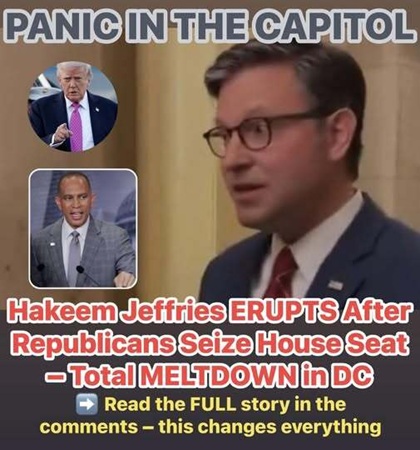
Across the United States, a quiet yet profoundly consequential battle is unfolding. Unlike debates over policy or legislation, this struggle centers on invisible lines — the boundaries drawn on maps that determine which voters are grouped together and, ultimately, who holds power in Congress. Though technical in appearance, these lines shape the practical workings of democracy. They decide which communities have influence, which voices are amplified, and which are marginalized, often with consequences that stretch for decades. The Republican Push in Key States. In multiple states, Republican-led legislatures are advancing congressional maps designed to expand their representation in Washington.
Encouraged by former President Donald Trump and his allies, these efforts seek to secure additional Republican seats, particularly in competitive districts. While framed by proponents as a reflection of voter will, critics argue that these moves constitute political engineering, prioritizing party advantage over fair representation. The implications extend beyond the immediate electoral cycle, potentially reshaping the House of Representatives and influencing policy decisions on a national scale for years to come.
North Carolina: A Familiar Map, a Sharper Edge
In North Carolina, Republican lawmakers have proposed a map that would give the party control of 11 out of 14 congressional districts — an increase from the current 10. The plan specifically targets the seat of Democratic Representative Don Davis, drawing criticism from Democrats, voting rights organizations, and civil rights advocates. Despite public protests and fierce objections, the state Senate passed the map, reflecting the Republicans’ structural advantage in controlling legislative processes.
Under North Carolina law, the Democratic governor, Josh Stein, cannot veto congressional redistricting measures. This legal limitation has made the passage of Republican-favored maps almost inevitable. Lawmakers argue that their redistricting plan preserves voter intent. State Senator Ralph Hise stated that the purpose of the map is to “secure another Republican seat” and protect Trump-aligned policies. Senate leader Phil Berger added that the plan respects “the choices of North Carolina voters.”
Yet opponents see the move as part of a broader pattern of partisan gerrymandering — a practice that manipulates district lines to guarantee political outcomes rather than reflect actual voter preferences. Voting rights experts warn that this approach can diminish competitive districts, weaken minority representation, and erode trust in the democratic process.
California: A Democratic Countercurrent
Across the country, California’s Democratic leadership is exploring strategies that mirror GOP tactics. Governor Gavin Newsom and state Democrats have proposed a ballot initiative to temporarily suspend the state’s independent redistricting commission, creating five new Democrat-leaning districts. Supporters argue this approach ensures equitable representation for growing communities, while critics see it as partisan overreach. This contrast highlights the uncomfortable reality: when stakes are high, both major parties are willing to bend redistricting rules to solidify their political advantage.
Other Battleground States
The contest over congressional maps extends to Texas, Missouri, Kansas, and Indiana, where Republican-controlled legislatures are pushing for new maps favoring GOP candidates. In Texas, the proposed redistricting plans have prompted lawsuits from voting rights groups alleging racial and partisan gerrymandering. Missouri has faced similar legal challenges, while states like Kansas and Indiana are navigating public protests and political backlash. Court rulings in these cases could establish precedents with national implications, influencing how states draw maps in future election cycles.
Currently, Republicans control both the governorship and legislature in 23 states, while Democrats hold both in only 15. This structural advantage allows Republicans to draw congressional boundaries more aggressively, shaping political representation in their favor for the next decade. Meanwhile, Democrats continue efforts to protect competitive districts, but in many states, they face uphill battles against entrenched legislative majorities.
Historical Context: Lessons from the Past
Gerrymandering is not a new phenomenon. The term itself dates back to 1812, when Massachusetts Governor Elbridge Gerry signed a redistricting plan designed to benefit his party, creating a famously contorted district shape resembling a salamander. Since then, both parties have used redistricting to consolidate power, with varying levels of transparency and legal oversight. The Supreme Court has occasionally intervened, as in the 2019 Rucho v. Common Cause case, which acknowledged partisan gerrymandering but deemed it a political question outside federal courts’ reach. These historical precedents underscore the complexity of redistricting and the tension between legal authority, political strategy, and democratic fairness.
The Ethical and Civic Implications
Beneath the technical discussions lies a moral question: what happens to democracy when maps drawn on paper begin to erode trust in the electorate? Redistricting was intended to reflect communities, geography, and shared interests, not to manipulate political outcomes. When boundaries are drawn to secure victories rather than represent citizens, voters may feel their voices are irrelevant, and communities risk being divided artificially. Scholars warn that prolonged gerrymandering fosters entrenched partisanship, voter cynicism, and political disengagement, weakening the social contract between citizens and government.
True democratic governance cannot thrive when the mechanisms of representation are wielded as tools of advantage rather than instruments of service. When maps become weapons, democracy risks becoming performative theater, where outcomes are predetermined by lines on paper rather than the will of the people. Integrity in governance is measured not by the number of seats won, but by the degree to which leaders honor unseen lines — those of conscience, fairness, and shared responsibility.
Looking Ahead
The redistricting battles of today will shape the political landscape for the next decade. Citizens, advocacy groups, and policymakers face a crucial choice: to allow redistricting to be a tool of division or to demand transparency, fairness, and accountability. The consequences are not merely partisan; they touch the very foundation of trust that underpins the American democratic experiment.
These contests are fought quietly — in committee rooms, statehouses, and court filings — yet their effects resonate loudly in voters’ daily lives. Communities split on paper often experience real-world division. Representation, a cornerstone of democracy, becomes contingent on the power of those drawing the lines rather than the will of the electorate. For the nation, the challenge is clear: democracy flourishes only when power is exercised ethically, responsibly, and in service to all citizens, not a select few.
A Call to Conscience
Ultimately, redistricting is more than a technical or political issue; it is a moral one. It forces Americans to confront how power should be distributed, how communities should be honored, and how trust can be preserved in a democracy under pressure. As new maps are drawn, the responsibility falls not just on lawmakers but on citizens themselves — to engage, to advocate, and to insist that the principles of fairness and accountability guide every line, every boundary, and every decision that shapes the future of representation in the United States.


